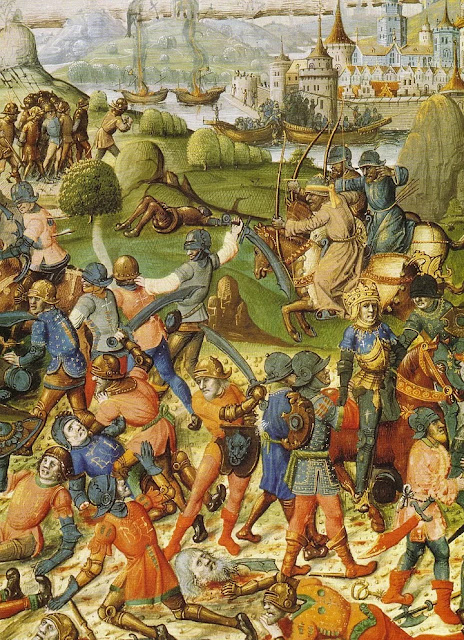How much did it cost to join a Medieval Crusade?
The economic part of the Crusades. Was it worth to join a crusade financially?
There exists a belief about the Crusades. Many believe that knights,
their soldiers, and servants joined these hard-fought battles in foreign
lands to make a fortune out of these journeys. However, this is not
completely true. There are nuances.
For knights, joining a Crusade was the most prestigious thing to pursue
at the time. An obvious reason to join a Crusade was the spiritual
reward anyone who reached the Holy Land could enjoy. It was a chance to
clear the soul from all the sins. A redemption! But if a knight was
lucky enough to return from the Holy Land with valuable artifacts, the
fame of his family name was embroidered in gold for the next few
generations. For some, it gave them the opportunity to marry a lady they
desired. In some cases, there were some financial incentives from a
successful campaign.
 |
However, that was rather a piece of luck than a regular occurrence. A
Crusade was more of a gamble for a knight or a monarch — it required
serious investments and was full of deadly risks and challenges. At the
same time, knights were willing to risk everything to gain honor, fame,
and respect among their rivals. If there was a chance to fight alongside
the king, it was an even better opportunity to hope for good gains.
The knight had to cover all the expenses, including everything related to his servants and loyal soldiers.
All the military equipment, food — it all was bought from the pocket of
an ambitious knight. In order to cover all the expenses, some of them
had to take loans or even put their castles on a mortgage. The preparation for such journeys took years of collecting money because the knight would leave his kingdom for multiple years. The inner circle of a knight could only pray for his return.
The situation was different for ordinary soldiers and servants. They did
not seek fame or honor because nobody would give them any of it. They
also did not have to risk any of their wealth because they had none of
it. However, if a soldier was lucky enough to survive a victorious
battle or siege, he could take his slice from the loot that largely was
used to cover all the expenses and prepare for future battles. From a
perspective of a medieval soldier, a Crusade was a lifetime experience.
Live in misery for the rest of your life, or visit the Holy Land that
might give some financial incentives. Not the worst motivation for a
soldier.
A fate of a knight in the Crusade was largely dependent on luck. Many
failed to achieve any glory and lost everything, while others never made
it back home. Nobody had insurance from death and a variety of
struggles. These daredevils in heavy armor had to endure not only all
the dangers of battles but also different diseases, wounds, and hunger.
During the First Crusade, there were even recorded cases of cannibalism.
Overall, participation in a Crusade was a costly
adventure in all terms. Only the luckiest managed to achieve their
initial goals. There were examples when a Crusade became the
final destination even for the monarchs who had armies behind them. The
French king Louis IX, known as Saint Louis, took part in two Crusades but survived only one, dying from dysentery in Tunis. The Holy Roman Emperor Frederick Barbarossa drowned in a river on the modern-day Turkey territory on the way to the Holy Land during the Third Crusade.
The life of a medieval knight was not that colorful and full of
interesting events. Even with wealth and status, he did not have a
variety of options for using those. War was a common and honorable
thing. Knight’s display of courage and combat skills always received
praise, and they were eager to earn it. Some did it in tournaments, some
on the battlefields. So finding motivation for joining a Crusade was
never an issue. The risk was an integral part and a driving force of a
knight’s life.
Comments
Post a Comment